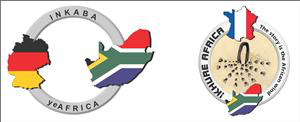Speaker
Mr
Pule Petrus Molokoane
(University of the Free State)
Description
Pseudo first order oxidation of 3,5-di-tert-butylcatechol under aerobic conditions to 3,5-di-tert-butylquinone. The process was catalyzed by square planar Cu(II)(naltol)2 complexes. The aim of this study was to imitate the activity and behaviour of the enzyme catechol oxidase by employing copper nano molecular materials, and to investigate electronic and steric effects on this catalytic oxidation process. A credible selection ensured that factors such as the effect of electron donating groups on ligands, steric bulk of the complexes, etc. could be investigated. Structural data revealed that all the 3-hydroxypyrid-4-one ligands which were synthesized were all in the keto-enol tautomeric form in the solid state. Furthermore in all the cases where a clear packing order was observed, weak hydrogen bonding is present. These interactions result in the formation of dimers, which stabilizes the structures. This data also indicated a C=O bond length increase with increasing electron donation in the synthesized O,O’-bidentate ligands systems. The synthesized copper complexes were planar with slight deviations from planarity and the copper atoms lie on inversion centers. These complexes exhibit strong intramolecular hydrogen interactions. The solution study results suggest that the complex with the least electron donating group on the ligand was the most effective catalyst; however, the same complex was coincidentally the most sterically demanding complex in the study. As the catechol oxidase is a macro-molecule which is very sterically crowded, the data suggests that steric effects play an important role in the catalytic process and this was successfully demonstrated at a small-molecular level of detail via solution modelling experiments.
Primary author
Mr
Pule Petrus Molokoane
(University of the Free State)
Co-authors
Prof.
Andreas Roodt
(University of the Free State)
Prof.
Gideon Steyl
(University of the Free State)

